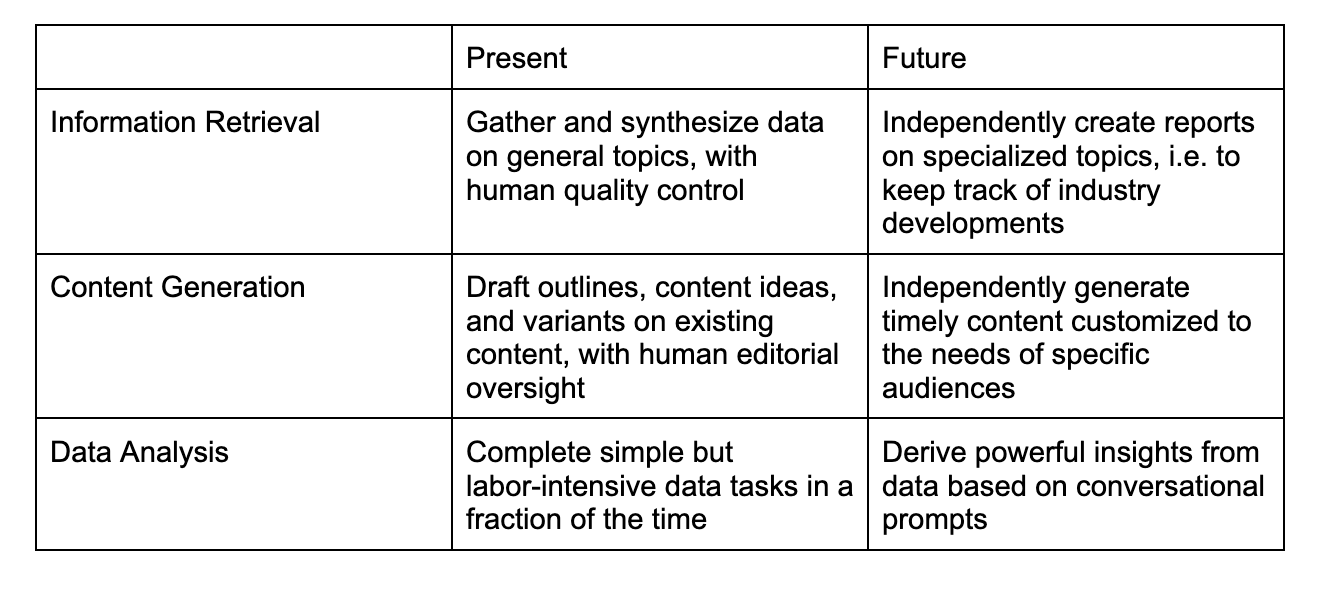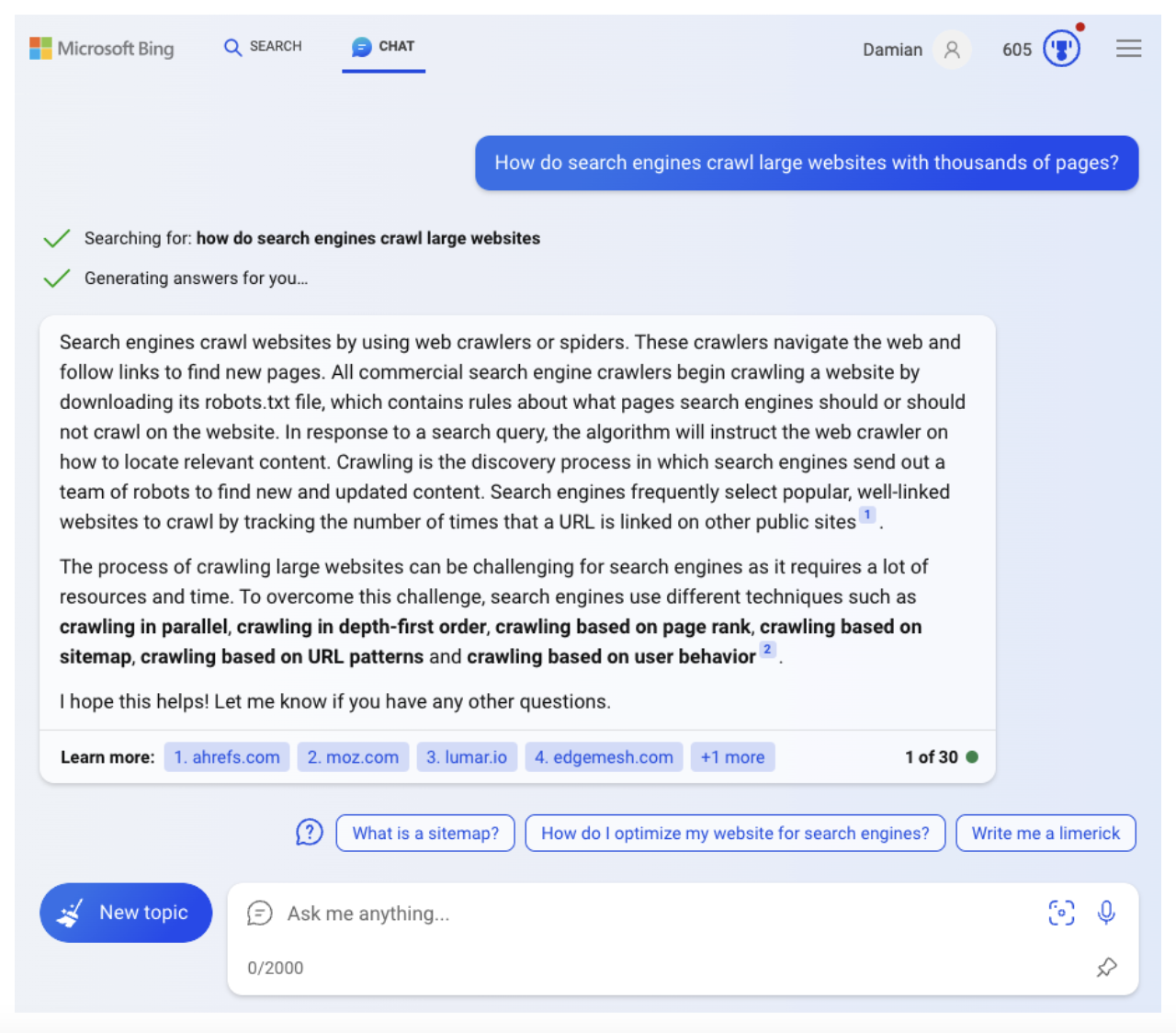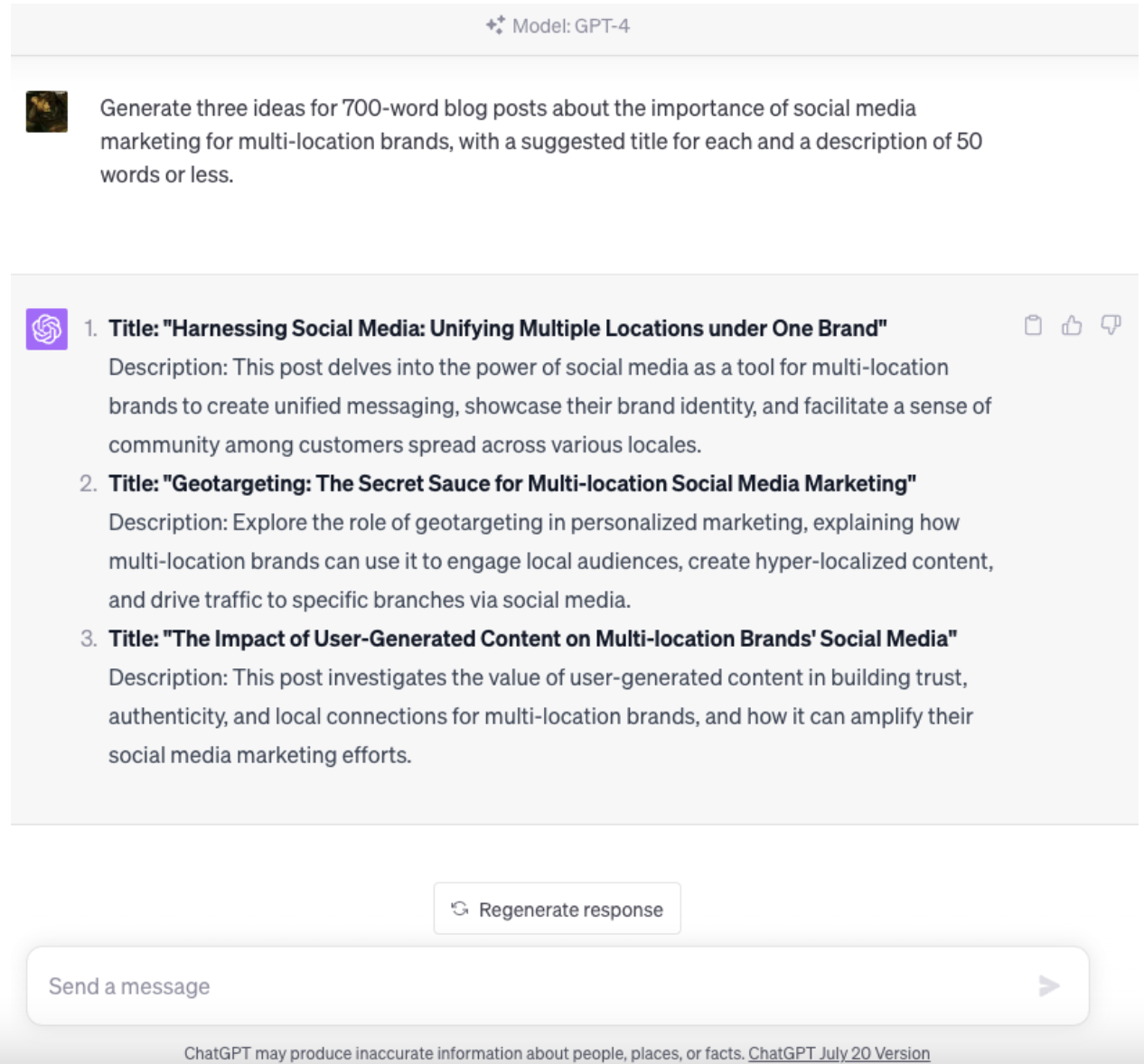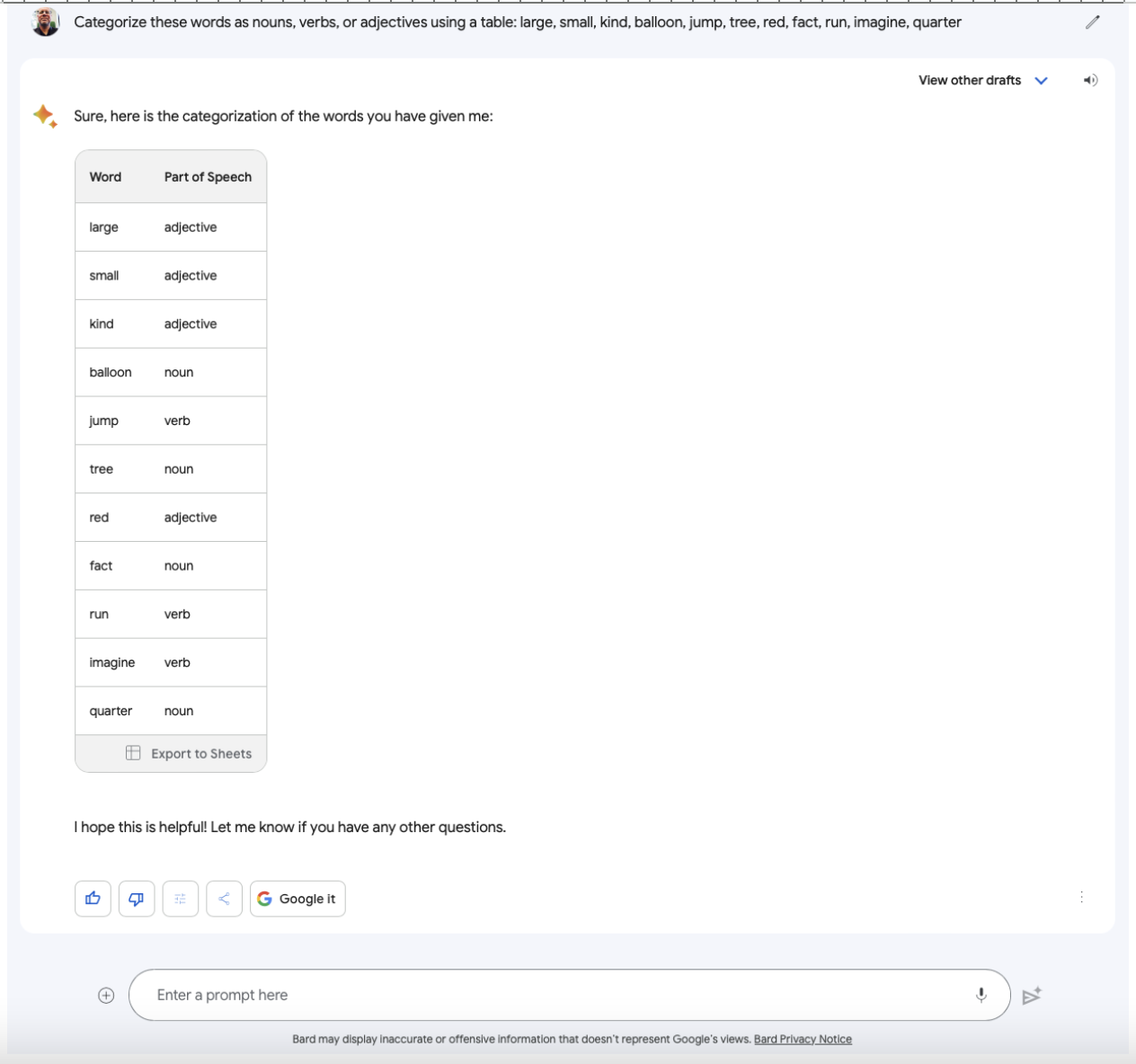Getting Started with Generative AI: For Multi-Location Marketers
Broad public awareness of the power of generative AI and Large Language Models (LLMs), driven largely by the success of ChatGPT, has pushed AI technologies to the forefront of many marketer’s minds and near-term planning discussions. This is because LLMs place advanced AI functionality in the hands of non-technical humans that can hugely improve productivity. The advantage of AI is no longer limited to specialists. Anyone can be trained to make use of these technologies.
That said, we are living through a transitional period in AI development when the gap between promise and execution is sometimes stark. Many of us can see the vision of what AI will be able to do in the near future, but are frustrated by the fact that it can still sometimes misunderstand our needs when we try to use it today.
That’s why savvy marketers will adopt a two-pronged approach to AI in the coming months. Firstly, the marketers’ task is to stay abreast of fast-moving developments as OpenAI, Microsoft, Google, and increasingly other big tech companies like Meta join the highly competitive consumer AI race. Second but no less important, there’s no time like the present to begin to integrate AI functionality into marketing operations, keeping in mind that most of today’s tools still require significant human oversight.
The following basic use cases for generative AI will be the ones to watch:
- Information retrieval and synthesis
- Content generation
- Data analysis
AI for Information Retrieval
You can ask ChatGPT and similar tools a broad range of information-based questions, using AI as a superpowered research assistant. Tools like Bing Chat and Google’s Bard, which are able to access the live internet, are probably the best for this use case today, since ChatGPT is limited to data available through September 2021 and thus cannot answer questions about recent events. (ChatGPT Plus did have access to Bing search, but this access has been temporarily disabled as of this writing.)
Things to keep in mind when using LLMs to gather information:
- LLMs are better at retrieving information on general knowledge topics than on areas of specialization. For instance, ChatGPT can explain how a search engine works, but may be less reliable when it comes to detailed local SEO questions. (For those, you might try Search Engine Land’s dedicated chatbot.)
- When in doubt, check the sources. Bing Chat is especially good at footnoting generative AI responses with web sources for each data point.
Bing chat offers concise responses to informational queries with footnotes and links to check sources, acting as a super-powered research assistant.
AI for Content Generation
This is probably the most talked-about use case for ChatGPT and its ilk, which have been used to compose songs and poems, write essays for school, and even create software code. Though the factual accuracy of content created by AI should still be carefully checked, LLMs are very good at producing professional-sounding sentences and paragraphs that are well organized and free from grammatical errors.
However, AI-generated content often comes across as generic, lacking the nuances that brands need to give their content personality and make their messaging stand apart. That’s why some of the most useful applications of Ai for content generation include:
- Drafting outlines for long-form content pieces including reports, whitepapers, webinars, and presentations. Since outlines are meant to be worked with and developed, it doesn’t matter if certain details are off target, and tools like ChatGPT are capable of producing outlines that are highly usable. Generative AI can be a great way to move from a blank page to a meaningful draft.
- Creating content ideas, such as topics for blog posts, social posts, ad campaigns, or any other marketing initiative. Again, AI can help you get off the ground and may generate ideas you’d never have thought of on your own.
- Drafting variations in written copy. Ask your AI tool to draft three variants on an existing email targeted to different personas and be amazed by how well it performs in such targeted tasks. With a little tweaking from human editors, you can customize and A/B test your marketing copy much more easily than ever before.
Using ChatGPT to generate ideas for blog posts on the importance of social media marketing. The tool can outline and even draft posts on your behalf, but be sure to edit carefully and check for accuracy.
AI for Data Analysis
For those of us engaged in market research or who use data to track the success of marketing efforts, generative AI is proving to be a godsend, offering quick solutions to tedious data management tasks (“Organize this list of companies by size and industry”) as well as insights that were once the province of data specialists (“Read these reviews of Company X and list the most common topics by frequency”).
It should be noted that of all the generative AI use cases, this one has to be watched the most carefully, given that LLMs are not especially good at numerical calculations. As ChatGPT “How many words are in this sentence?” and you may get answers other than seven. This will improve over time and with the introduction of dedicated math capabilities.
That said, LLMs are already realizing their potential to make data analytics much more user-friendly by taking care of the busywork.
Google’s Bard chatbot performs a simple data organization task and offers a helpful link to export the result to Google Sheets.
Looking Towards the (Near) Future
Now is the time to master the skills required to get the most out of generative AI in its current form. These are the skills that will differentiate the marketers of the future from their peers. AI capabilities will improve at a rapid pace in the coming months, and only those who act now will remain ahead of the game.
Damian Rollison
Subscribe to Local Memo!
Signup to receive Local memo updates and the latest on localized marketing, delivered weekly to your inbox.



